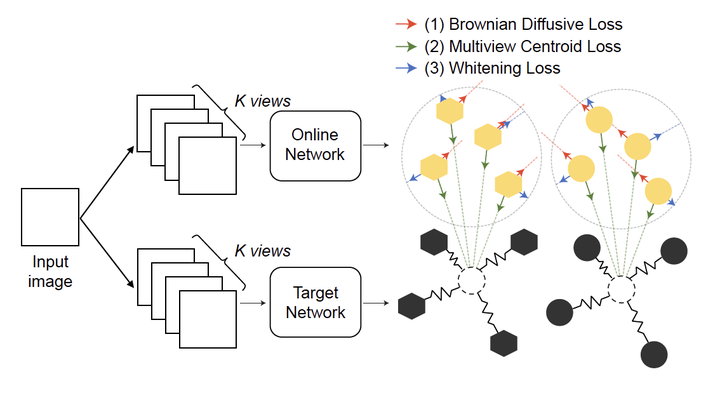 Image credit: Unsplash
Image credit: Unsplash
Abstract
A number of recent self-supervised learning methods have shown impressive performance on image classification and other tasks. A somewhat bewildering variety of techniques have been used, not always with a clear understanding of the reasons for their benefits, especially when used in combination. Here we treat the embeddings of images as point particles and consider model optimization as a dynamic process on this system of particles. Our dynamic model combines an attractive force for similar images, a locally dispersive force to avoid local collapse, and a global dispersive force to achieve a globally-homogeneous distribution of particles. The dynamic perspective highlights the advantage of using a delayed-parameter image embedding (a la BYOL) together with multiple views of the same image. It also uses a purely-dynamic local dispersive force (Brownian motion) that shows improved performance over other methods and does not require knowledge of other particle coordinates. The method is called MSBReg which stands for (i) a Multiview centroid loss, which applies an attractive force to pull different image view embeddings toward their centroid, (ii) a Singular value loss, which pushes the particle system toward spatially homogeneous density, (iii) a Brownian diffusive loss. We evaluate downstream classification performance of MSBReg on ImageNet as well as transfer learning tasks including fine-grained classification, multi-class object classification, object detection, and instance segmentation. In addition, we also show that applying our regularization term to other methods further improves their performance and stabilize the training by preventing a mode collapse.
Supplementary notes can be added here, including code, math, and images.